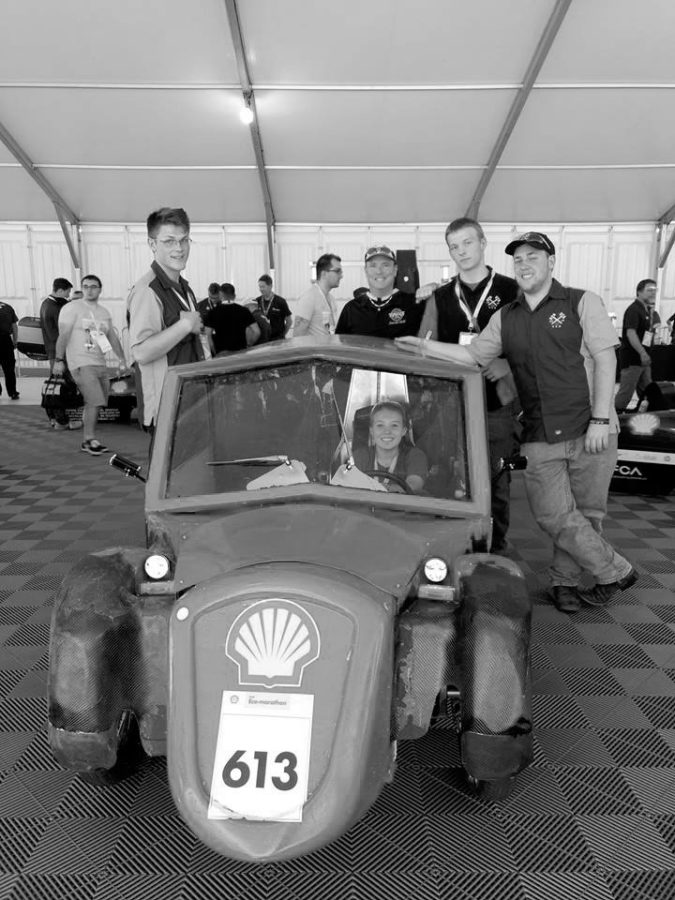STEM Team Brings Home Bronze
Wheat Ridge STEM team poses with their urban concept car.
May 10, 2018
The Wheat Ridge High School STEM team returned from the Shell Eco Marathon Competition last week, where their prototype hydrogen fuel cell vehicle placed third out of nine different groups, with the teams being both from the U.S. and abroad.
In the four years the Farmers have has competed, they have placed all four years, coming in first place two times and second once. The team wasn’t just competing against other high schoolers; many of the teams came from public and private and universities.
The team competed in two Shell Eco Marathon events, the prototype vehicle competition and the UrbanConcept vehicle competition. Each team’s project is inspected to ensure driver safety. Inspection includes electrical systems, mechanics, and general body design. The different competitions required different designs for the body and motor. For the prototype vehicle, the focus was on fuel efficiency rather than pragmatism, with the vehicles designed to be small, light-weight, and as aerodynamic as possible to boost efficiency. The prototype competition itself consisted of several laps around a track at a set speed, to measure how far each team could travel on one liter of given fuel.
Besides designing the vehicle, the team also built many of the parts used. “We make about 95 percent of our vehicle(s) in shop,” said senior Gabriella Cordova.
“We start off with designing the vehicle on the computer, both mechanical components and body-wise, then from there we begin to manufacture the bodies and vehicle out of carbon fiber,” added senior Kevin McCoy.
The biggest design challenges for the team came from the UrbanConcept vehicle competition. The goal of this event is, again to measure efficiency, but in a more practical, street-legal vehicle. The specifications for this vehicle were very precise, as each vehicle must have windshield wipers, headlights, tail-lights, and signals. These additions were somewhat problematic for the team, as they required more electricity and wiring than the prototype vehicle. These additions also added weight to the vehicle, so a larger hydrogen cell was necessary, both to power the motor as well as the signals and lights. Unfortunately for the team, the UrbanConcept vehicle failed to make it around the track in the alloted time, so they did not place in that category.
The group’s dedication to STEM expands far outside the confines of the competition. “I think it’s important not just to the school but to the community and reaches beyond the community because we’re standing out on an international level, and we are competing against colleges from all over the place as well, so we are competing on a much higher level than most other high schools,” said sophomore Michael Sullivan. “So we really stand out in the whole nation as a really good STEM program, and we really stand out as having the skills to excel in these fields much more than most other schools.”

